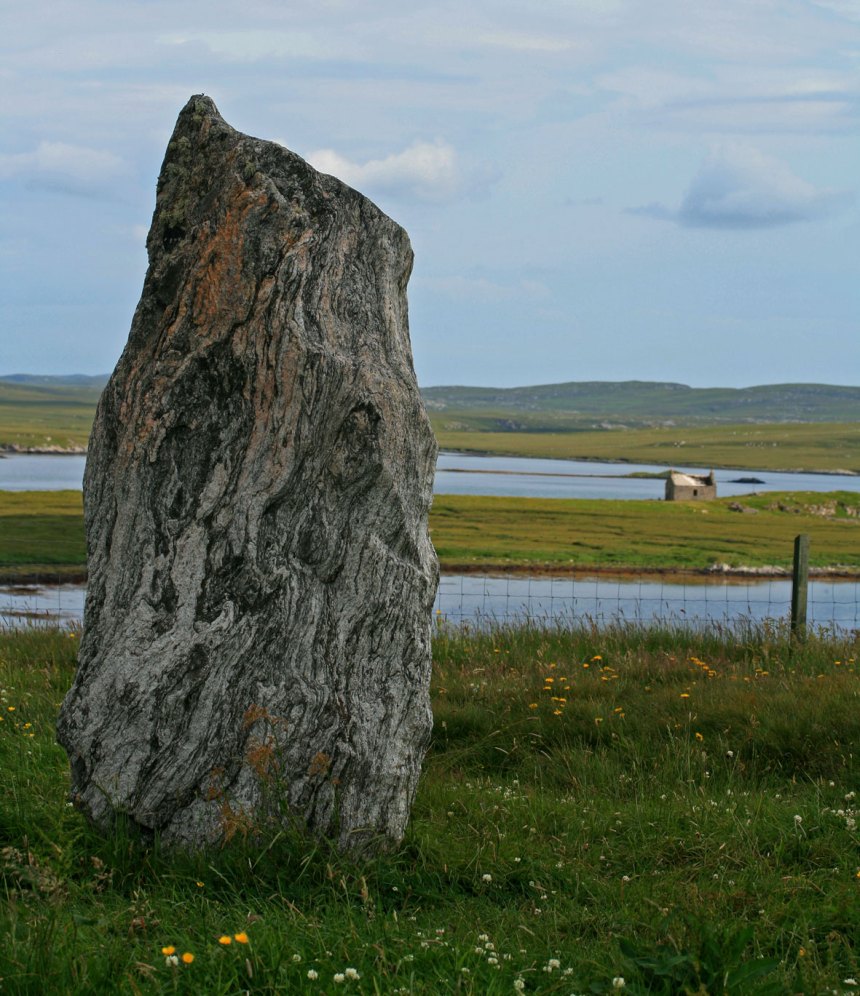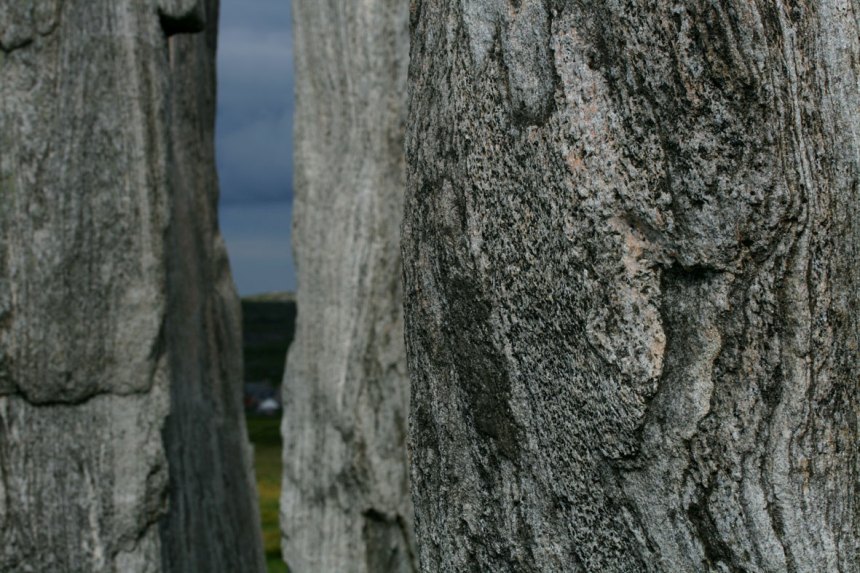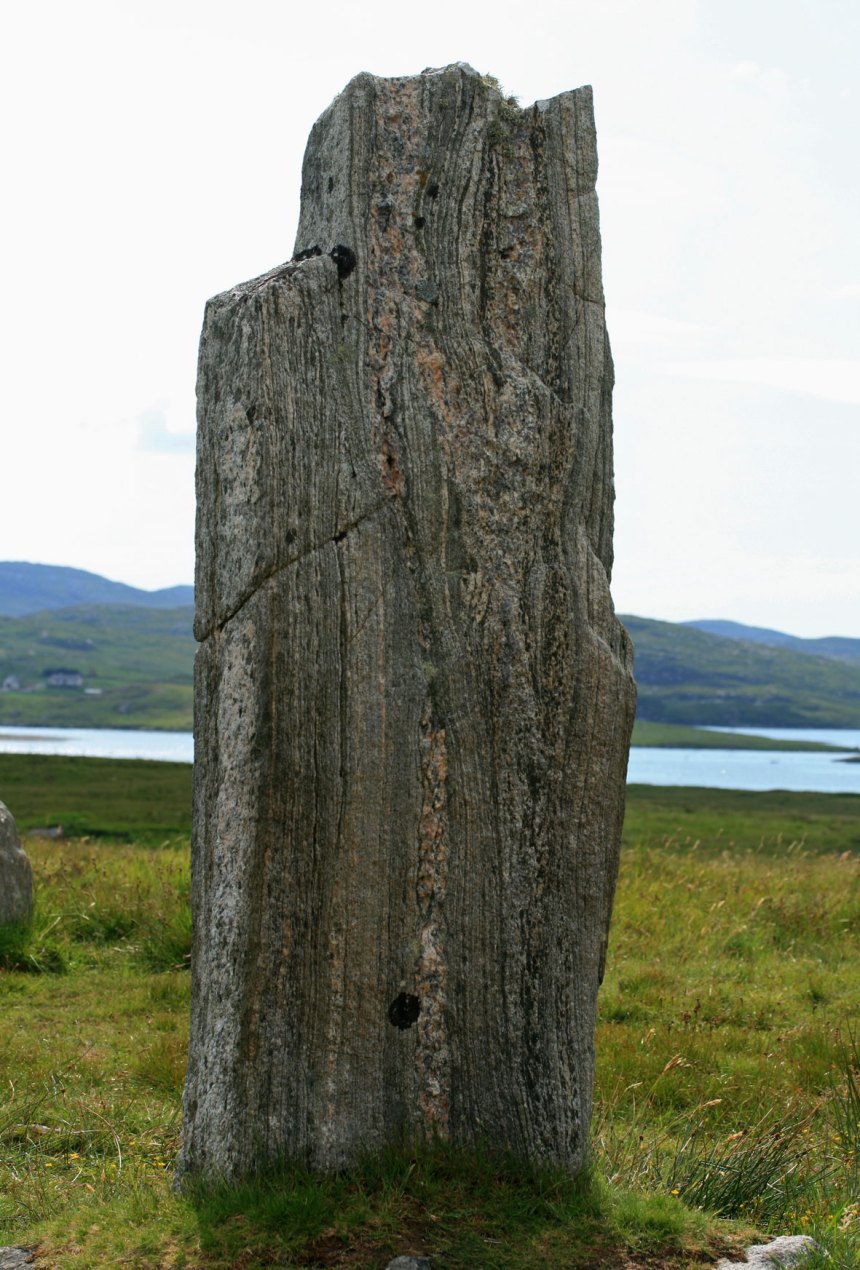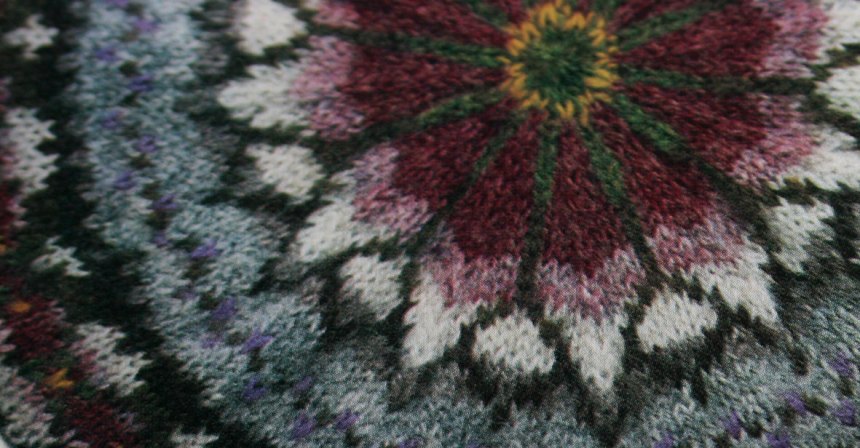I’ve been thinking a lot about colour of late, and about how closely one’s experience of colour is tied up with one’s experience of landscape. I had a conversation with Mel the other day — concerning the crazy hues of the lichens she’d seen in a particular West Highland location — and was reminded of another recent landscape encounter, and the incredible colours it involved. We enjoyed a fleeting visit to Lewis and Harris a few weeks ago (we will be back for a proper holiday later in the year – hurrah), and were lucky enough to visit the standing stones at Calanais. Stone circles are breathtaking spaces, of course, but among these stones at close quarters, what I was most struck by was their varying textures, shades and colours.
Human hands moved these stones into position more than four thousand years ago, but the rock from which they are formed is much, much older. This is some of the most ancient stuff in the world in fact — Lewisian Gneiss, more than three billion years old. For those of you who, like me, find geological time so mind-boggling that it is virtually meaningless, this rock has been around since before the earth cooled down and the mountain-wrapping work of continents began. Lewisian Gneiss is a metamorphic rock, with a foliated and coarsely granular character. And if you are wondering about my geological vocabulary, its partly from the GCSE I did many moons ago (thankyou, Mr Boardman), but mostly drawn from Hutton’s Arse , a book that I quite enjoyed — Malcolm Rider’s deeply dodgy politics notwithstanding. While I found his particular brand of localism offputting to say the least, he knows a hell of a lot about gneiss. Discussing some notable late nineteenth- and early twentieth-century geologists, Rider talks about how their accounts of the landscape of northern Scotland as monochrome and “sterile” really missed the point. The rock that at a distance seems to be a “familiar weathered grey” turns out at close quarters to be something else entirely:
“a closer look . . .shows that the gneiss has a fine banding on a centimetre scale, in greys, whites, and dark colours, beautifully picked out by a combination of ice smoothing and several thousand years of rain and weather. The climate of Scotland is very good at this.”
(Huttons Arse, p. 178)
Rider describes Lewisian gneiss as a “terrestrial mille feuille” and I remembered this when looking at the standing stones at Callanais.
I spent a long time looking at the intrusions of pink granite against the banded grey. And closer inspection of the stone revealed a shimmering mass of many colours: dark flecks of magnetite and mica, luminous quartz and feldspar. This is the composition of the rock itself — and then there are the hues of a changing climate — the stone folds weathered and darkened by wind and water; pale pin pricks of butter and pea-coloured lichen. Around the stones are purple and yellow and white wildflowers, and beyond them, the deep blue-green haze of the ground, lochans, and hills of Lewis.
The banded pinks and greys of the gneiss at Calanais have stayed with me, and I’ve been thinking about them more since I began reading Alice Starmore’s Book of Fairisle Knitting a few days ago. I’m still digesting the implications of Starmore (I lack the words right now) but all I can say is that the woman is a genius, and that her genius is bound up with the Lewisian landscape that surrounds her. There are many things to like about Starmore, but her eye for quotidian detail — for the beautiful and colourful in the ordinary — is really something else. The shades of this tam were inspired by those of a sprig of clover that had pushed its way through the cracks in a strip of tarmac. It just about kills me.






Your second picture did it for me. A mass of neutrals with a pop of bright, especially those greeny-yellows – yum! Thanks for transporting me to your world for a few minutes.
LikeLike
Thank you for this post and the wonderful photographs. I love your posts about the landscapes in which you find yourself; and this one about the link between landscape and colour perception echoes some recent conversations I’ve had with friends. Here in Australia, I think I have the same reaction to the colours in the bark of our various gum (eucalypt) trees – which are not so different from the stones you’ve been observing.
LikeLike
Wow, thanks for sharing your stunning pictures and for the little insight into Alice Starmore’s work and creative process. Very inspiring.
LikeLike
I credit childhood holidays to Arisaig, Lewis and Achnahaird with developing my eye as an artist. Even as a child, I was captivated by the incredible acid yellow of the lichens against the mottled grey rock.
Have you ever been to Achnahaird, Kate? It’s the most amazing beach up past Ullapool, in the lee of Stac Polly.
LikeLike
A beautiful, thought-provoking post. Thank you. as always. I’m discovering Starmore now, myself.
LikeLike
I’m always amazed by the richness of the yellow in lichen. It just looks stunning against grey slate and granite.
LikeLike
Mille feuille indeed!!
LikeLike
have you looked at colourlovers.com? it’s a wonderful place to explore different palettes and test color schemes for yourself. i’ve used it to help define colorwork projects for myself.
LikeLike
Gorgeous – the stones and the tam. I’m a texture girl, myself. When I knit, I’m more interested in cables and lace and interesting stitch patterns than in fair isle and intarsia, and when I do play with color, it’s in more subtle variations that bring out the texture of the fabric. These stones are EXACTLY what I like about working with color! And that tam makes me want to get better at it. :-)
LikeLike
Oh gawd. Those delectable stones are bringing on an attack of pica…
LikeLike
Ah! Megaliths. I could talk about them forever…
Not sure if you know the Assynt area but there are some beautiful examples of Lewisian Gneiss (and Torridonian sandstone) at the beaches and cliffs around Clachtoll, Stoer etc. I’ve spend many, many hours of my life staring at them in admiration, and I think they show off the stone in their ‘natural’ setting really rather spectacularly.
LikeLike